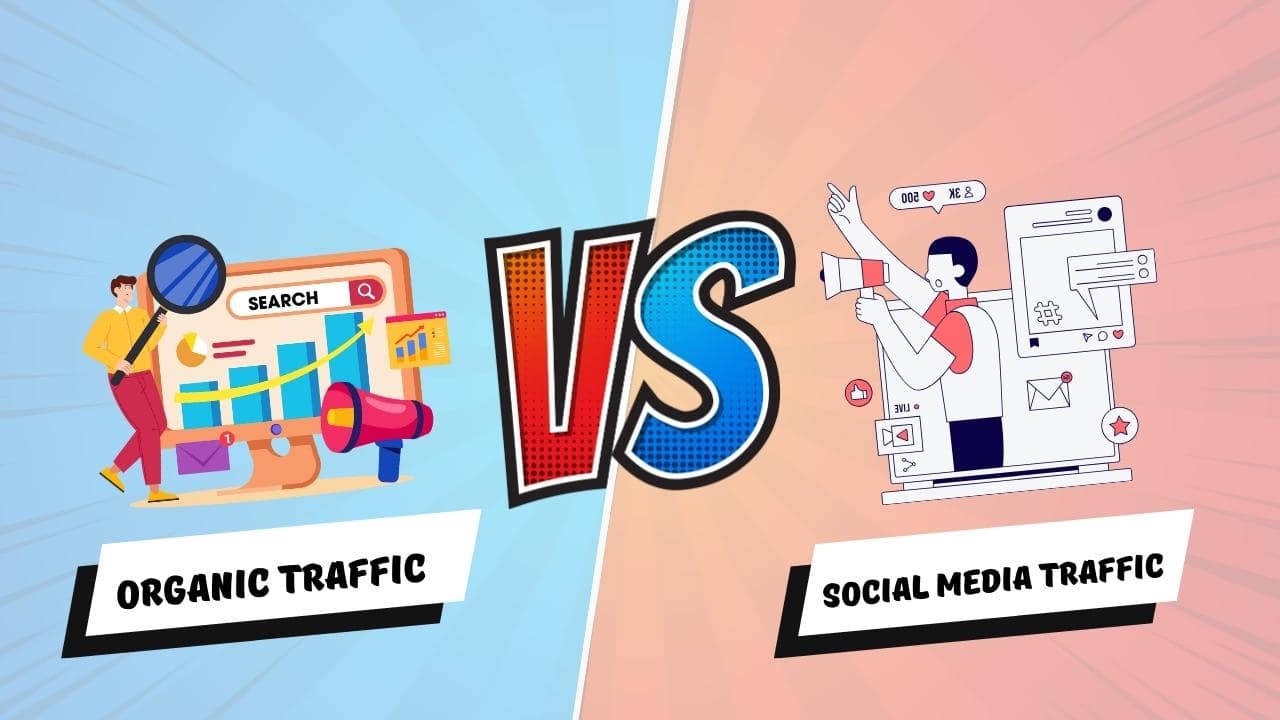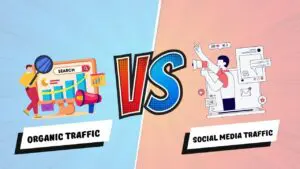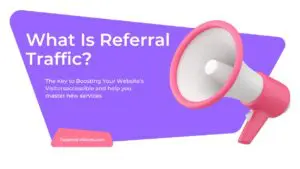Contents
- 1 Targeted Organic Traffic vs. Social Media Traffic: Understanding Their Engagement and Impact
- 2 What Is Targeted Organic Traffic? (And How to Increase It)
- 3 Why Is Targeted Organic Traffic Important?
- 4 How to Increase Targeted Organic Traffic
- 5 What is Social Media Traffic?
- 6 Targeted Organic Traffic vs. Social Media Traffic: Key Differences
Targeted Organic Traffic vs. Social Media Traffic: Understanding Their Engagement and Impact
Targeted Organic Traffic vs. Social Media: Engagement & Impact – Organic traffic targets high-intent users, while social media boosts visibility and engagement. In the world of digital marketing, driving traffic to your website is a key objective. However, not all traffic is created equal. The two main sources of website traffic—targeted organic traffic and social media traffic—differ significantly in terms of how they are generated and the level of engagement they bring. Understanding these differences is crucial to making informed decisions about your marketing strategy.
What Is Targeted Organic Traffic? (And How to Increase It)
Targeted organic traffic refers to visitors who come to your website through search engines like Google, Bing, or Yahoo, based on relevant, high-intent search queries. Unlike general traffic, targeted organic traffic consists of users actively searching for information, products, or services that closely match what your website offers.
Why Is Targeted Organic Traffic Important?
- High Conversion Potential: Users arriving from organic search often have a specific intent and are more likely to convert—whether by making a purchase, signing up for a newsletter, or engaging with your content.
- Cost-Effective: Unlike paid advertising, organic traffic doesn’t require ongoing investment. Once your site ranks well for relevant keywords, it can continue to bring visitors without additional costs.
- Long-Term Results: Building targeted organic traffic through SEO can provide long-term, sustainable traffic to your site, unlike social media or paid ads that require continuous effort.
How to Increase Targeted Organic Traffic
- Optimize for Relevant Keywords: Research and identify high-volume, low-competition keywords that are closely related to your business. Incorporate these keywords naturally into your website’s content.
- Create High-Quality Content: Content is king when it comes to SEO. By providing informative, valuable, and engaging content, you can satisfy search intent and encourage users to stay longer on your site.
- Improve On-Page SEO: Optimize your website’s technical elements, such as meta tags, titles, descriptions, and header tags, to ensure that search engines can easily crawl and understand your content.
- Build Backlinks: Earn high-quality backlinks from reputable sources to boost your site’s authority and improve your rankings on search engine results pages (SERPs).
- Focus on User Experience: A website that is fast, mobile-friendly, and easy to navigate encourages visitors to stay longer, reducing bounce rates and improving search rankings.
- Use Local SEO: If your business serves a specific geographic area, optimize for local SEO by using location-based keywords, setting up your Google My Business profile, and obtaining local backlinks.
- Regularly Update Content: Fresh, updated content is more likely to rank higher in search results. Regularly posting blog articles or updating existing pages can help attract new visitors.
This type of traffic is intent-driven—users are actively searching for solutions and have a higher likelihood of converting into customers or subscribers. For a more detailed guide on how to increase your organic traffic, visit 3x Your Organic Traffic: A Step-by-Step Guide.
What is Social Media Traffic?
Social media traffic is visitors who come to your website from platforms like Facebook, Instagram, Twitter, LinkedIn, and others. This traffic is typically driven by content you share, such as posts, ads, or even comments and shares. Social media allows you to reach both a broad audience and a highly targeted group based on interests, demographics, or behaviors.
Leveraging Social Media to Drive Website Traffic
Social media is a powerful tool for driving traffic to your website, offering unique opportunities to reach a broad and diverse audience. Here’s how social media can enhance your website traffic:
- Broad Reach and Visibility: Social media platforms like Facebook, Instagram, Twitter, and LinkedIn have millions of active users, giving you access to a vast audience. By sharing engaging content, you can attract clicks and direct users to your site.
- Targeted Advertising: With social media advertising, you can target specific demographics, interests, and behaviors, ensuring your content reaches the most relevant audience. This targeted approach maximizes the quality of your traffic.
- Engagement and Sharing: When your content resonates with users, they are likely to engage by liking, commenting, or sharing. These interactions increase the visibility of your posts, driving more traffic to your website.
- Influencer Partnerships: Collaborating with influencers who have large followings can boost your visibility and send highly relevant traffic to your website. Influencers can drive trust and credibility, motivating their followers to click through to your site.
- Content Promotion: Sharing blog posts, videos, infographics, and other valuable content on social media helps increase your brand’s reach. Linking back to your website in these posts can encourage users to visit for more detailed information.
- Retargeting Opportunities: Social media platforms offer retargeting tools that allow you to show ads to users who have already visited your website. This can bring them back to your site, increasing chances of conversions.
Unlike organic search traffic, social media traffic is often discovery-driven—users may not be actively searching for your product or service, but may find your brand through engaging content, influencer partnerships, or paid ads. To further boost your visibility through social media, check out these 7 Social Media Strategies to Attract Visitors.
Targeted Organic Traffic vs. Social Media Traffic: Key Differences
1. Intent and Motivation
- Targeted Organic Traffic: Visitors are searching with a specific intent, such as looking for solutions, researching products, or finding answers to questions. They have a clearer purpose, making them more likely to convert.
- Social Media Traffic: Users may not have an immediate intent to purchase or engage deeply with your brand. Social media traffic often comes from users simply scrolling or interacting with posts, which may not always lead to high conversion rates.
2. Engagement Levels
- Targeted Organic Traffic: The engagement from organic visitors tends to be deeper and more meaningful. These visitors often spend more time on the site because they are looking for specific information that is relevant to them. As a result, the likelihood of long-term engagement (like returning to the site, subscribing to newsletters, or making a purchase) is higher.
- Social Media Traffic: Social media traffic can be highly engaging in the short term, particularly if content goes viral or sparks discussions. However, engagement can be fleeting. Visitors may click through out of curiosity, but they often don’t stay as long, and the quality of interaction may be lower than that of organic traffic.
3. Sustainability
- Targeted Organic Traffic: Organic traffic is more sustainable in the long run. Once your site ranks well for specific keywords, it can continue attracting visitors without continuous effort. The benefits of SEO are cumulative, meaning the more you invest in it, the higher the returns over time.
- Social Media Traffic: Social media traffic can be more volatile. While you can drive traffic quickly through paid ads or viral posts, it often requires consistent effort to maintain visibility. Additionally, social media algorithms change frequently, which can impact the reach of your posts. If you’re looking for ways to supplement organic traffic with paid options, you might consider exploring Buying Organic Website Traffic.
4. Conversion Potential
- Targeted Organic Traffic: Because organic traffic is highly targeted, the conversion potential is higher. Users are already searching for specific information, making them more likely to take action—whether it’s subscribing to your email list, purchasing a product, or downloading a resource.
- Social Media Traffic: While social media traffic can also result in conversions, it’s often lower in terms of intent. Users may click on an ad or post out of curiosity but may not be ready to make a purchase or take a significant action. Social media works best when you nurture these visitors through a funnel, leading them to more direct interactions. You can learn more about how referral traffic can enhance your website’s performance by visiting Referral Traffic Benefits.
How to Leverage Both for Maximum Engagement
To get the best results, combining targeted organic traffic and social media traffic is essential. Here are some strategies to effectively use both sources:
- Use Social Media to Support SEO Efforts: Share your blog posts or landing pages on social media to drive traffic and improve engagement. This can also generate more backlinks to your site, boosting SEO.
- Create Shareable Content: Develop content that encourages social sharing, such as infographics, videos, or blog posts with valuable insights. This increases social media engagement and can help attract more organic traffic as well.
- Retarget Organic Traffic with Social Media Ads: Once you have targeted visitors from organic search, retarget them with personalized ads on social media. This reinforces brand awareness and can lead to higher conversion rates.
Conclusion
Both targeted organic traffic and social media traffic offer unique advantages and engage visitors in different ways. Organic traffic is driven by search intent and results in long-term, high-quality engagement, while social media traffic can introduce your brand to a broader audience and spark immediate interaction. By understanding the strengths of each and combining their efforts, you can create a comprehensive strategy that maximizes both engagement and conversions.
For more detailed strategies and insights, you can explore additional resources like Is Buying Organic Traffic a Good Investment?.






